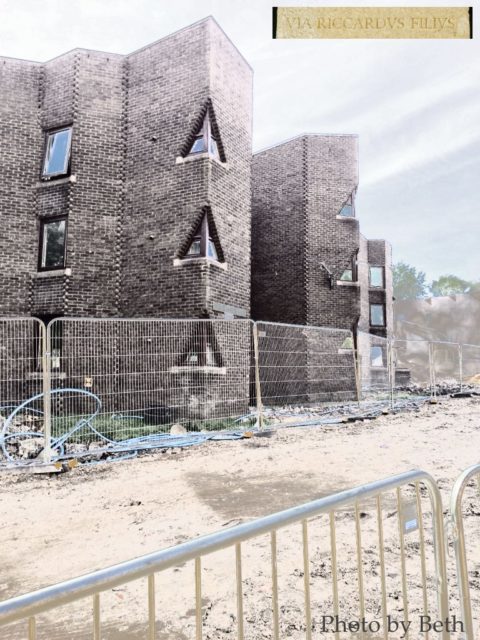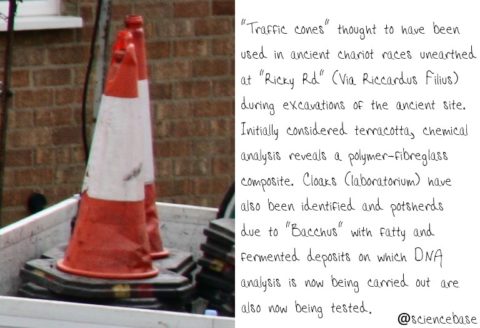Currently underway is the demolition of the ancient residences of Via Riccardus Fillius on the site of what is now Newcastle University; known in the modern tongue as the Ricky Road flats. The department of archaeology has been on the site for several weeks and has so far unearthed at least 17 traffic cones, thought to be terracotta, although possibly a primitive polymer-fibreglass composite.

They have  also identified several fossilised cloak laboratorium, many of which still carry coinage, quills, spatulae and eyeware in frayed and stiffened pouches, or pockets. The sophisticaed chemical testing method of mass spectrometry has been used to identify the faint alchemical odour as being due to acetone and pyridine degradation products thought to have been used in pyrotechnic rituals. Atomic absorption spectromometry, AAS, has also identified traces of sodium known to have been present as flakes of desiccated sodium hydroxide used as a method of torture or in the emascalation of errant eunuchs.
The biology team, meanwhile, is busy extracting and sequencing DNA from fatty deposits (some containing lustrous red pigments) and foamlike fermentation residues from the rim and interior of pint potsherds originally used by Bacchus, circa AD 85 (AD 1985, that is).

We have attempted to contact one expert of the era a Professor(?) Smell(?) for comment on the legend of the so-called “Bridge Pool”, thought to be the site of at least one near-gladiatorial encounter that took place somewhere between Segedunum and the Priory at the mouth of the Tyn river (known in the modern era as Wallsend and Tynemouth). However, evidence from Stephanus Negotianis suggests that event most likely took place closer to one of the many viaducts or walksways used by merchants and centurians alike to cross the ancient water course. There were significant numbers of broken potsherds and slanderous graffiti enscribed on the stone walls of buildings identified as local hostelries as well as the interiors of ablution houses of the period that provide further evidence of this and related episodes.